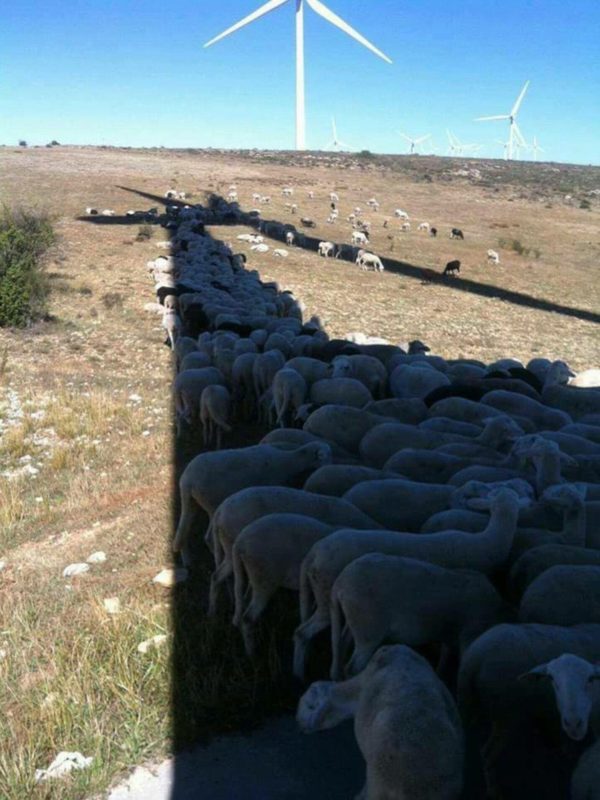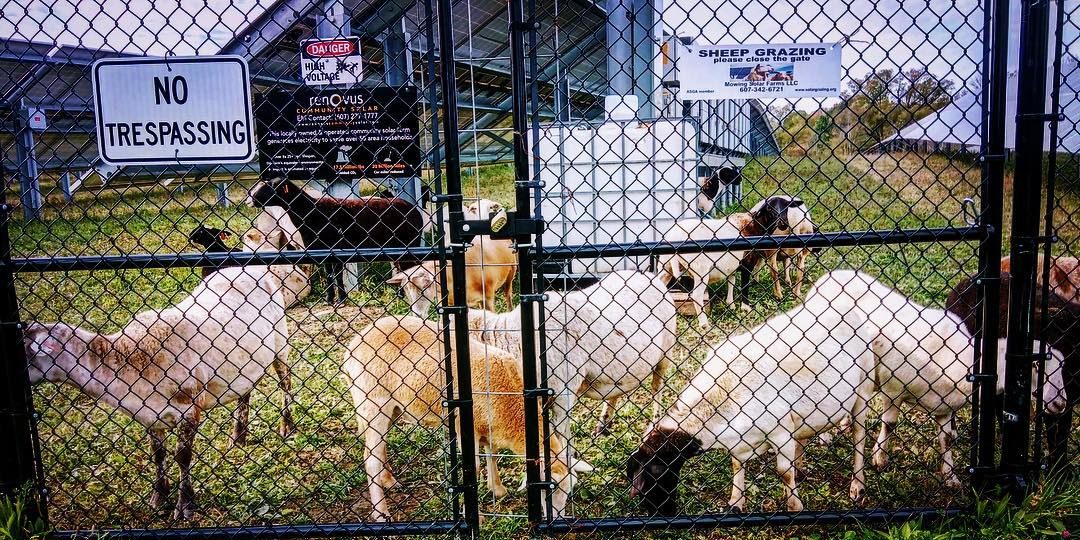The solar power industry has a great land use responsibility, as there is the potential to use up to 1% of U.S. land if we are to 100% power the nation with solar.
The non-profit, volunteer-run American Solar Grazing Association (ASGA) is developing phase-one of a website to connect solar power operations and maintenance teams with local sheep farmers for the purpose of managing land cover. The group is accepting donations via its website, and is currently at $1,170 of $4,500 needed (including this author’s donation).

Lexie Hain, ASGA’s executive director, who offers sheep land management services in upstate New York, said that one of the biggest issues for farmers is that while they can locate local solar farms quite easily — getting in touch with the owners, and their O&M teams, is quite the challenge. So, ASGA has decided to build a tool on its website, based on a Google maps back end, that will allow both parties to input their pertinent information and hookup.
The group has multiple projects in development to support the industry. ASGA President, Jonathan Barter, talked about an ongoing project with Cornell University to develop a pollinator friendly and cheap seed mix that can both feed the sheep and support local habitats. Barter noted:
We’ve narrowed the search down a few species – from 55-60 seeds originally – that we’ve incorporated into a pollinator mix which we would like to try out on a few solar power sites to really track how they bear-up under grazing. Our biggest question is, how are these varieties going to do alongside traditional pollinators under rotational grazing pressure? Just yet though, we don’t have this data – but soon enough we’re going to find out.
The current seed mix adder, which is still officially experimental, is about $150/acre. One of ASGA’s partners, Ernst Pollinator, applies solar-powered pollinator seed mixes for less than a penny a watt (starting at around $2,500/acre).

One nuance that Hain explained to pv magazine USA is that the areas where sheep actually graze are the most challenging areas to manage:
There’s a famous picture of a bunch of sheep in a wind turbine shadow (above image). There’s big open prairie and where have the sheep chosen to lie in the summer? In the shade. In the daytime, sheep are always under the panels. I’ve taken videos of the solar sheep – they’re walking down the line under the panels, doing the hard work. Then in the evenings and morning they head out into the rows to feed there. Young animals specifically benefit from the protection.
Hain notes that sheep farmers are contracted by the solar O&M teams on a performance basis, so they still bring some vegetation management equipment onsite to touch up the areas that the sheep missed. In research done by the Atkinson Center for a Sustainable Future at Cornell University in 2018, it was found that sheep grazing services on the east coast of the U.S. and in New York range from $308 to $555 per acre. These values were far below the reported average of $868 per acre per year for traditional vegetation management.
Roughly speaking, in the wetter east coast regions, 3 to 4 sheep per acre are needed for management. In much drier regions this value is far lower, however, one story and one data point shows how this can greatly vary — a west Texas solar developer left the solar plant with a pure dirt ground cover as it was a fairly arid desert-like region. However, soon sunflowers moved in – and grew tall and strong as they do. Hain’s team helped manage it.
Another variable researchers discovered in specifically arid regions, is that the solar facility altered the microclimate variables of mean air temperature, relative humidity, wind speed, wind direction, and soil moisture significantly – increasing water efficiency and allowing for much greater biomass growth. In fact, up to 90% more grasses were found.
Hain ended our conversation by reminding us the importance of connecting solar farms with local farms: “What it really comes down to, is that we’re trying to solve a local communication issue. Farmers and ecological services companies wanting to connect with the people doing the work, and wanting to do the work. If you want to sustain the solar industry, we need to have good neighbors. And connections like this help with the resiliency of these communities in a big way.”
So, c’mon folks, swipe right for solar and sheep.
This content is protected by copyright and may not be reused. If you want to cooperate with us and would like to reuse some of our content, please contact: editors@pv-magazine.com.








By submitting this form you agree to pv magazine using your data for the purposes of publishing your comment.
Your personal data will only be disclosed or otherwise transmitted to third parties for the purposes of spam filtering or if this is necessary for technical maintenance of the website. Any other transfer to third parties will not take place unless this is justified on the basis of applicable data protection regulations or if pv magazine is legally obliged to do so.
You may revoke this consent at any time with effect for the future, in which case your personal data will be deleted immediately. Otherwise, your data will be deleted if pv magazine has processed your request or the purpose of data storage is fulfilled.
Further information on data privacy can be found in our Data Protection Policy.